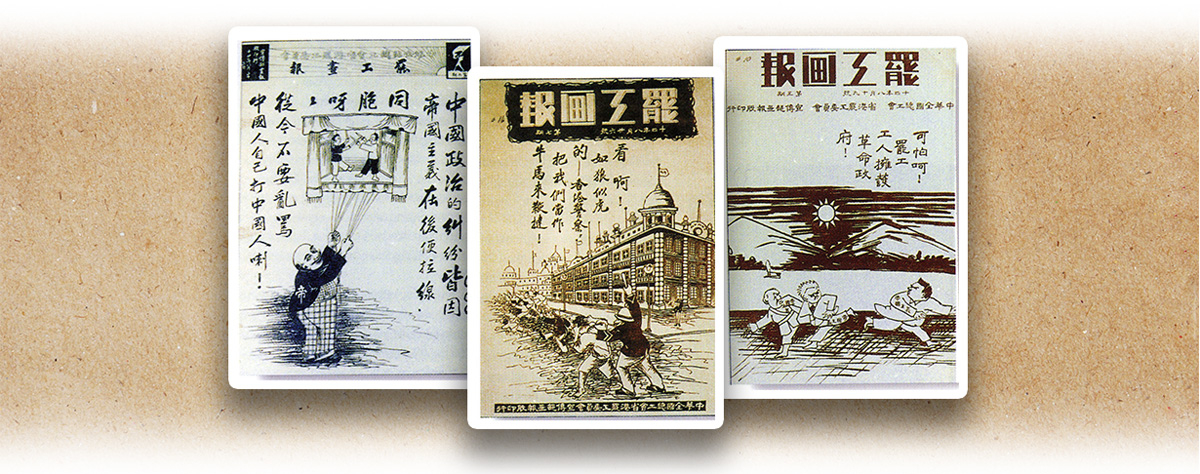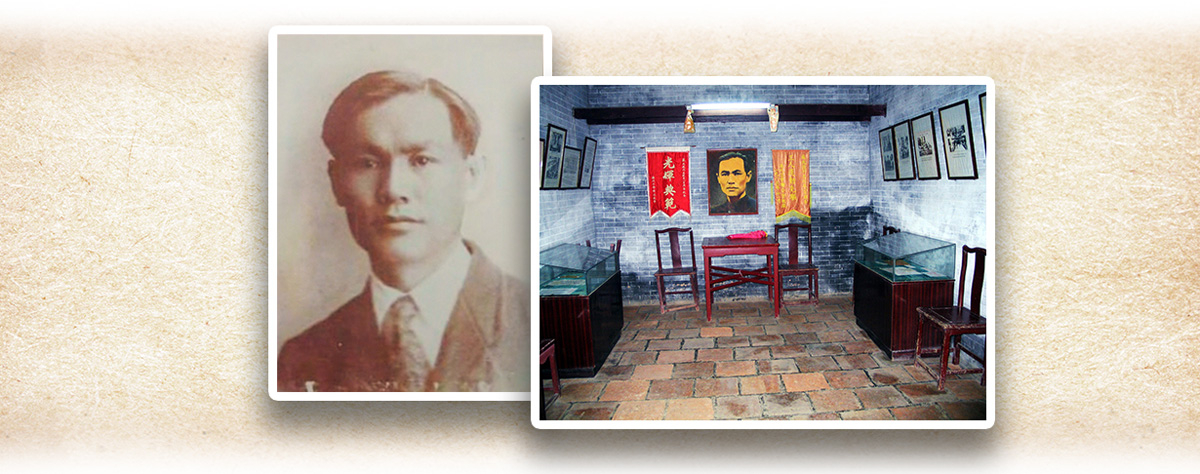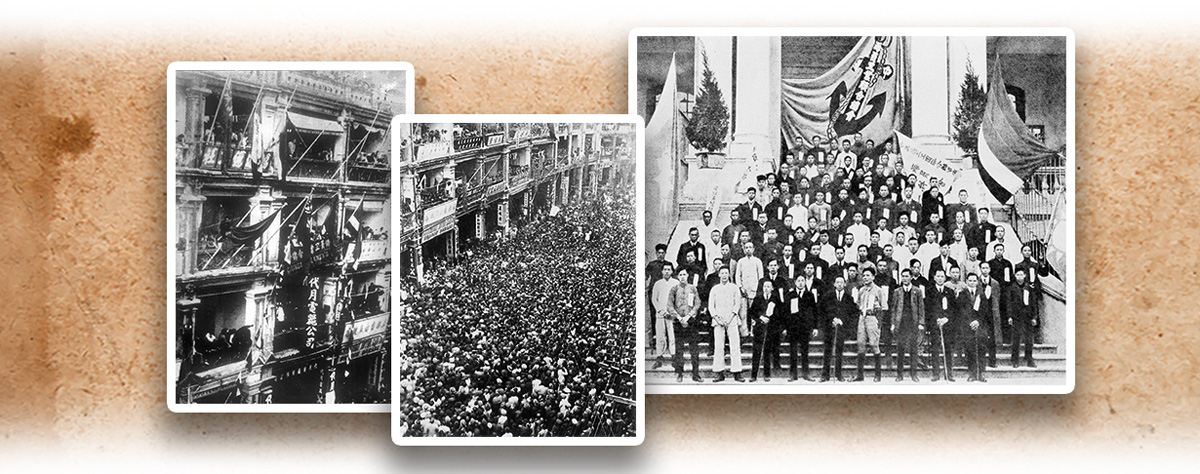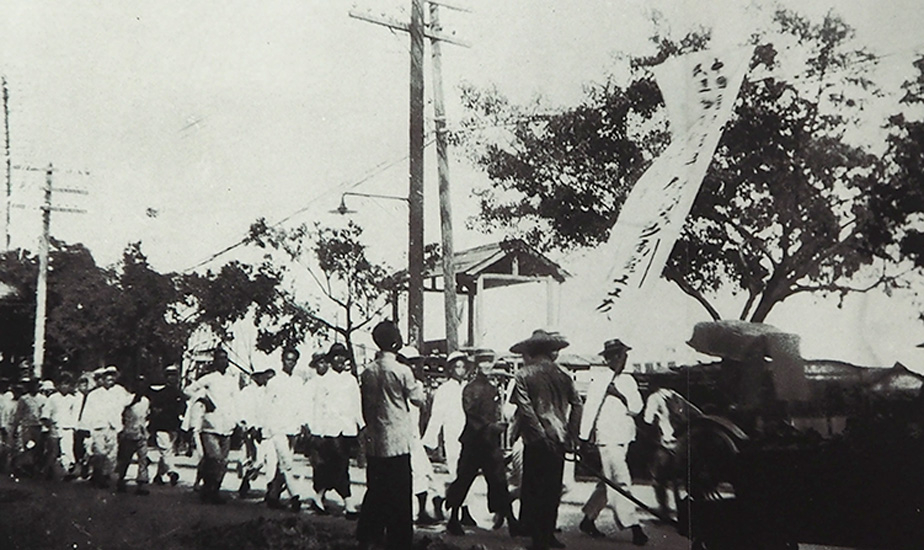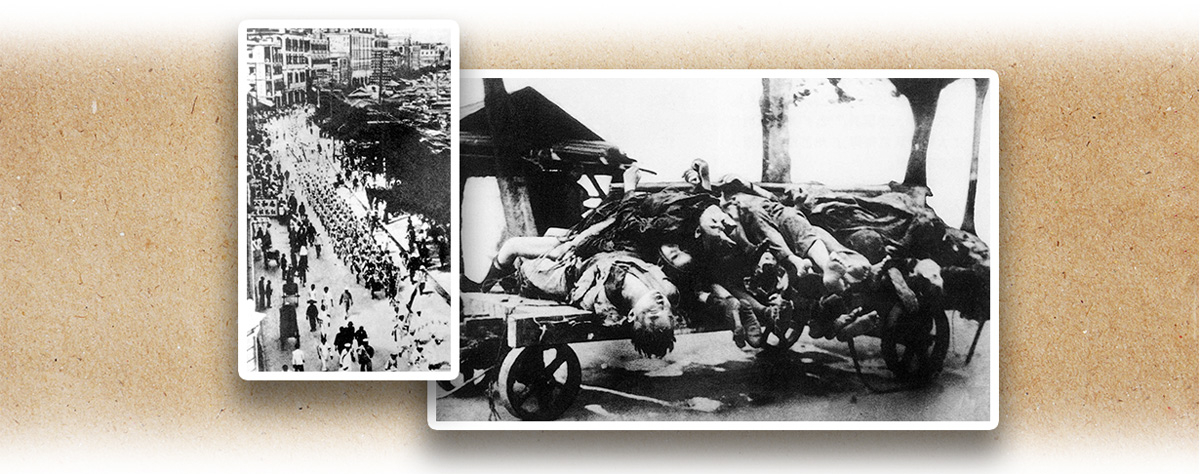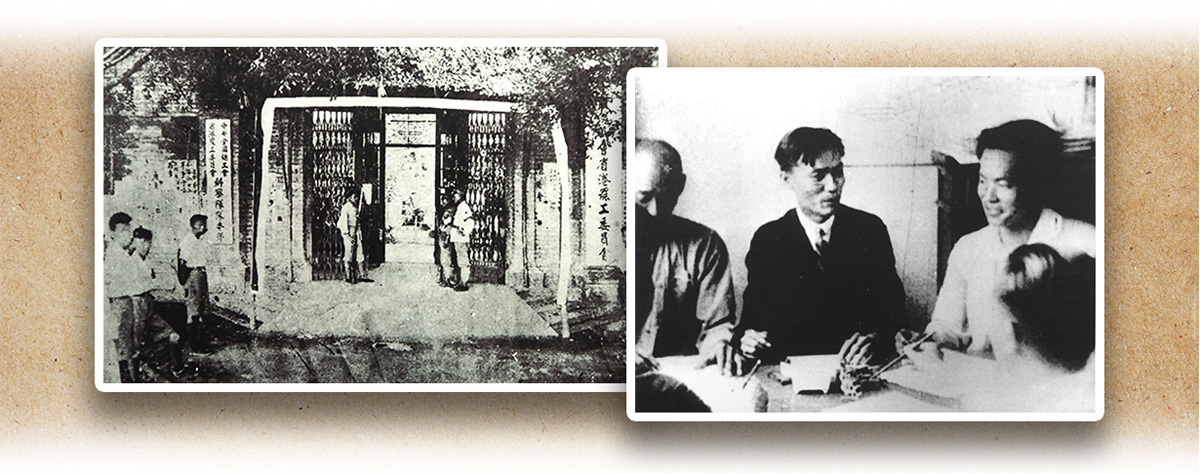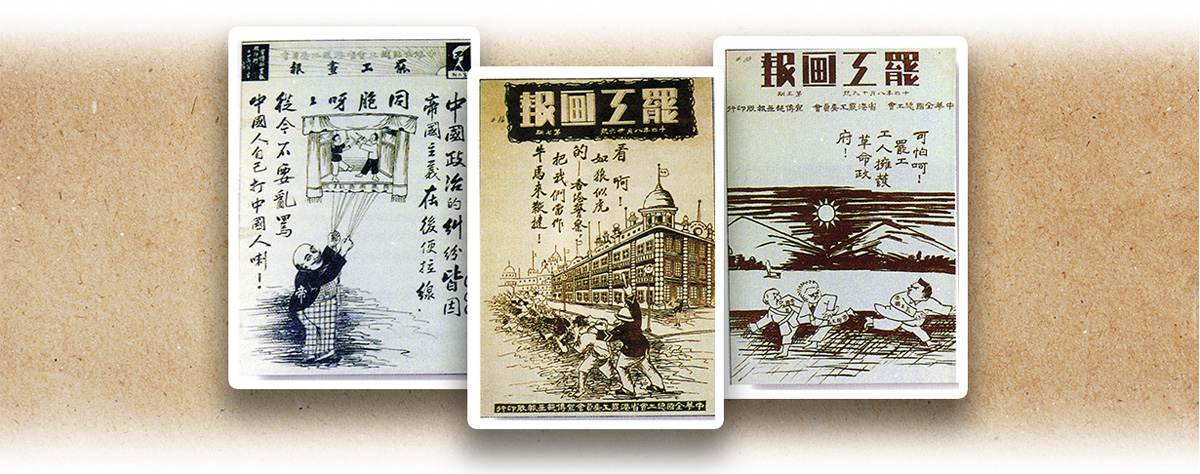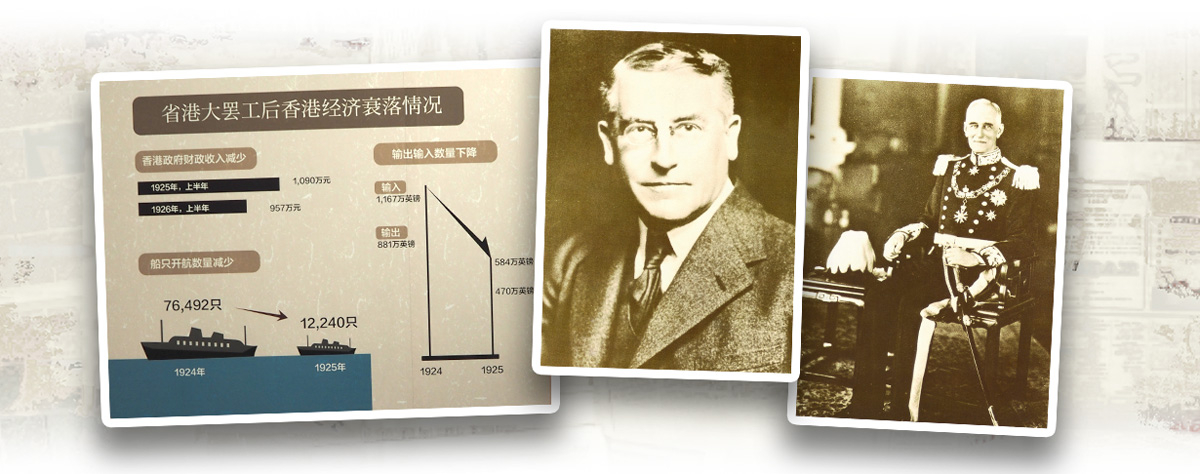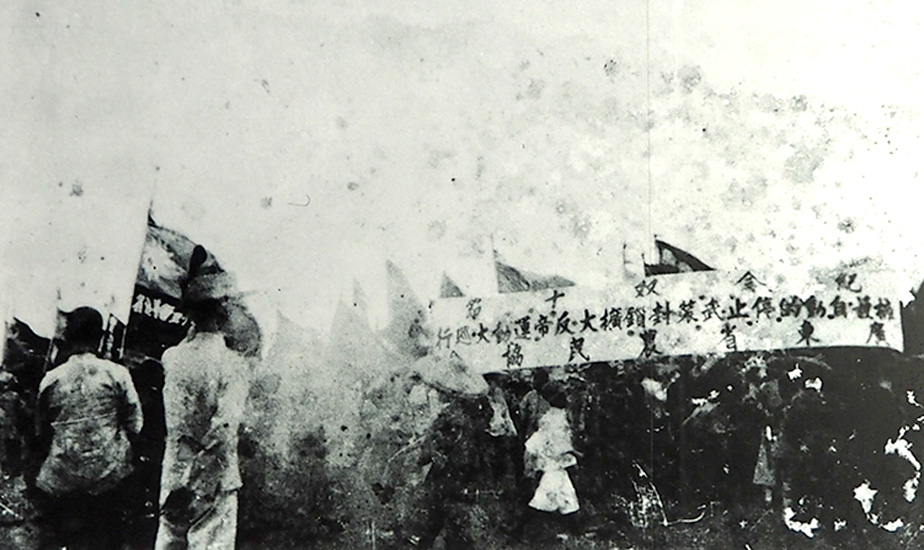The Hong Kong Seamen’s Strike
As the early industrial workers in Hong Kong, seamen were often exploited by foreign shipowners and contractors. Most of them led a hard life and lived under the threat of unemployment. Influenced by the revolutionary thoughts in the Chinese mainland, the Chinese Seamen’s Union was established in Hong Kong with the support of Sun Yat-sen (孫中山) in March 1921. The Union put forward three demands to shipping companies in September 1921, including a pay raise for Chinese seamen, but were ignored by the latter. Instead, the shipping companies raised wages by 15% for foreign seamen. In view of this, Hong Kong seamen went on strike on 12 January 1922, which was widely supported by local people and those in Guangzhou (also known as Canton, 廣州). At first, the British Hong Kong government dealt with it using an iron fist and even opened fire to suppress the workers in Sha Tin. However, it eventually had to accept the Union’s demands and the latter announced to resume work on 7 March. The Seamen’s strike of 1922, which lasted for 55 days, ended in a victory for workers.
The Canton-Hong Kong strike
After the news of the May 30th Incident in Shanghai (上海) spread to Hong Kong in 1925, the anti-imperialism sentiment of Hong Kong workers and the public surged. In early June, representatives of the All-China Federation of Trade Unions convened a meeting to mobilise various trade unions in Hong Kong for a strike. Starting from the 19 June evening, all Hong Kong workers went on strike when seamen, tram workers, and printing workers took the lead. Strikers returned to Guangzhou by train and ship. The strike escalated after what later became known as the Shaji Incident (or Shakee Incident, 沙基慘案) when demonstrators in Guangzhou were shot dead by British and French troops and policemen. At that time, the total population of Hong Kong was about 800,000. Since the strike began, about 250,000 workers returned to Guangzhou. The Canton-Hong Kong Strike Committee was established when the strikers returned to Guangzhou. It learnt from the experience of the Seamen’s strike of 1922 and organised pickets to enhance the blockade of Hong Kong. The Canton-Hong Kong strike caused huge economic losses to Hong Kong. The total amount of imports and exports in Hong Kong in 1925 was only half that in 1924. The shipping industry was greatly affected as well. The port hygiene worsened as cleaners went on strike. Later, the strike committee announced to stop the blockade of Hong Kong and end the strike to support the Northern Expedition. The Canton-Hong Kong strike lasted for a year and four months from June 1925 to October 1926 was unprecedented in the history of world labour movement.
|
|
What were the major factors contributing to the success of the 16-month-long Canton-Hong Kong strike? |
|
|
See answer below. |
Su Zhaozheng (蘇兆徵) and an interior view of his former residence in Qi’ao Village (淇澳村), Tangjia Town (唐家鎮), Zhuhai City (珠海), Guangdong Province (廣東). Su was a famous labour movement activist in modern China who led the Hong Kong Seamen’s strike of 1922 and the Canton-Hong Kong strike. He joined the Chinese Communist Party (中國共產黨, CCP) in 1925.
Hong Kong seamen struck on 12 January 1922. The strike lasted for 55 days and the seamen won in the end. Left: the signboard of the Chinese Seamen’s Union was hung back on after the strike; Middle: people filling the street on the day the signboard was hung; Right: a group photo of the committee members of the Chinese Seamen’s Union and some seamen in Guangzhou. Su is standing on the front row (third right).
At first, the British Hong Kong government dealt with the strike using an iron fist and declared martial law. The Chinese Seamen’s Union was closed by force and its signboard was taken down on 1 February. The vast majority of Hong Kong seamen joined the strike, and they received sympathy and support from the people in Hong Kong and Guangdong, as well as the Government of the Republic of China in Guangzhou. The city’s traffic was interrupted, production was suspended, and shops were closed when over 100,000 workers in Hong Kong joined the strike in early March. The British military police shot the strikers who were going back to Guangzhou on foot in Sha Tin on 4 March, killing and injuring many. This “Sha Tin Incident” provoked the public in Hong Kong and further escalated the strike. Due to the adverse situation at that time, the British Hong Kong government was forced to accept the demands put forward by the Union, including raising Chinese seamen’s wages by 15% to 30%, lifting the ban of the Union, releasing arrested workers, and compensating the victims of the Sha Tin Incident. The British-Hong Kong government returned the signboard of the Union on 6 March. Workers hung up the signboard again to symbolise the victory of the Seamen’s strike of 1922. The Union announced to resume work and the strike officially ended on 7 March.
Left: British policemen in Shanghai suppressed the demonstrators and led to the May 30th Incident on 30 May 1925. Right: people in Beijing (北京) staged a demonstration after the May 30th Incident. The labour movement in the first half of 1925 and the May 30th Incident eventually led to the Canton-Hong Kong strike.
Waves of strikes were staged in cities including Shanghai and Qingdao (青島), Shandong Province (山東), to fight for workers’ rights from February 1925. However, they were suppressed by government authorities, foreign policemen, and foreign-owned factories. Gu Zhenghong (顧正紅), one of the workers’ representatives, was shot dead by a Japanese-owned factory staff on 15 May. This fuelled public outrage. British policemen in Shanghai fired shots to suppress on 30 May, killing and injuring a dozen of demonstrators. The incident was known as the May 30th Incident. It caused a surge of anti-imperialism sentiment, especially in Guangzhou and Hong Kong, and labour movements spread to other parts of the country. The Canton-Hong Kong strike was about to break out.
Strike and demonstration in Shamian (沙面), Guangzhou. In Hong Kong, seamen, tram workers, and printing workers took the lead to strike on 19 June 1925. This marked the beginning of the Canton-Hong Kong strike. It broke out in full scale when workers in Shamian struck on 21 June.
More than 100,000 Chinese workers in Hong Kong and Guangzhou demonstrated to support Shanghai on 23 June 1925. They were shot by British and French troops and policemen in Shaji. More than 50 people were killed, over 100 people were badly injured, and countless people suffered minor injuries. This incident aroused indignation among people in Guangzhou and Hong Kong and escalated the strike. Left: Guangzhou and Hong Kong workers demonstrating in Shaji; Right: victims of the Shaji Incident.
To lead the strike effectively, the Canton-Hong Kong Strike Committee of the All-China Federation of Trade Unions (the Canton-Hong Kong Strike Committee for short) was established in Guangzhou on 3 July 1925. It became the organ leading the Canton-Hong Kong strike. Su Zhaozheng and Deng Zhongxia (鄧中夏) were appointed as Chairman and Vice-chairman respectively. Left: the site of the Canton-Hong Kong strike Committee; Right: Su (middle) and Deng (right) discussing the strike arrangement. Both were CCP members. It was during the time when the Kuomintang of China (中國國民黨, KMT) first cooperated with the CCP. The Nationalist Government in Guangzhou supported the strike amid its anti-warlord and anti-imperialism effort and active preparation for the Northern Expedition.
Pamphlets published by the propaganda department of the Canton-Hong Kong Strike Committee. They encouraged workers and the public to fight against oppression.
The Canton-Hong Kong strike targeted at the British Hong Kong government after the Shaji Incident. Left: On 5 September 1925, the Canton-Hong Kong Strike Committee of the All-China Federation of Trade Unions, Guangzhou General Chamber of Commerce, Guangdong Federation of Commerce, Guangzhou Chamber of Commerce, and Guangzhou Association of Commerce jointly issued a notice regarding the blockade of Hong Kong; Right: the Committee pickets patrolling on the Pearl River to enhance the blockade of Hong Kong during the Canton-Hong Kong strike.
Hong Kong suffered huge economic losses due to the Canton-Hong Kong strike (left). The Hong Kong Governor Reginald Edward Stubbs (middle) suppressed the strike with an iron fist that worsened the situation. In November 1925, Britain appointed Cecil Clement (right), who was familiar with Chinese culture, as the Hong Kong Governor to deal with the strike with a more peaceful approach.
A demonstration was staged in Guangzhou on 10 October 1926 to support the Northern Expedition by ending the blockade of Hong Kong. In July 1926, the Nationalist Government in Guangzhou launched the Northern Expedition. To support the advance of the National Revolutionary Army, the Canton-Hong Kong Strike Committee announced in October 1926 the end of the 16-month-long Canton-Hong Kong strike.
|
|
What were the major factors contributing to the success of the 16-month-long Canton-Hong Kong strike? |
|
|
The major factors are as followed: 1. The Chinese people in general hated foreign oppression. They were willing to support the Union’s call to strike against imperialism. 2. The CCP was good at organising and initiating labour movements. It effectively mobilised workers to support the strike. 3 The Nationalist Government in Guangzhou supported the strike to combat imperialism and win people’s hearts. |
The images in this material are provided by Professor Lau Chi-pang and Professor Liu Shuyong (Photos 7 and 8), Fotoe (Photos 1-6, 8-10), and misc. photo sources. Every effort has been made to trace the copyright holders and obtain permission to reproduce this material. Please do get in touch with any enquiries or any information relating to this image or the rights holder.




